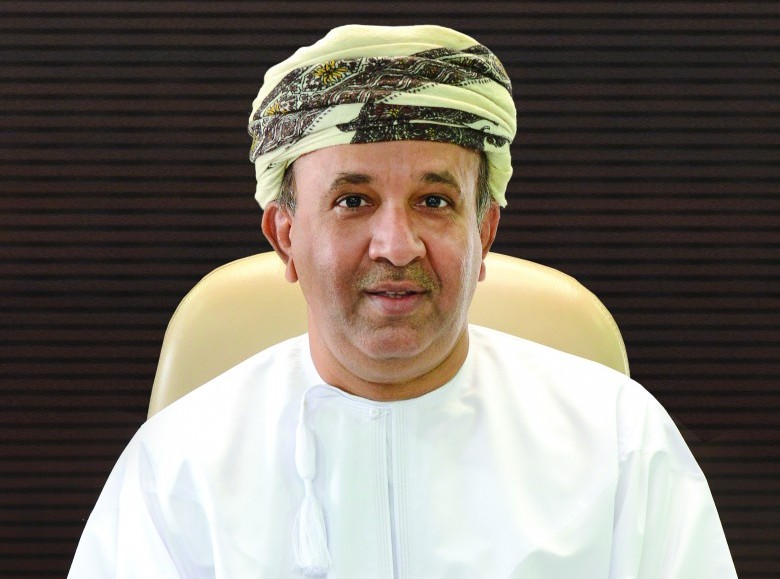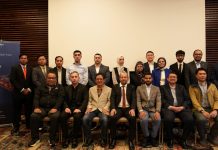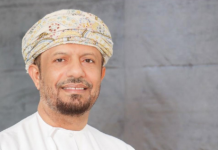Oman Electricity Transmission Company is making substantial investments for building new power infrastructure and upgrading existing transmission facilities to meet the future growth in demand, says CEO, Eng Ali Said Al Hadabi in an interview to Muhammed Nafie
Can you talk about the operation of OETC and the major milestone achievements of the company?
Oman Electricity Transmission Company (OETC) which came into existence in 2005 owns and operates the main electricity transmission network through which electricity is transmitted from the generating stations to the distribution load centres in all governorates of Sultanate. The main electricity transmission network operates at high voltages of 132kV and 220kV, with new transmission assets at 400kV recently commissioned and under construction.
Basically, our customers are the four distribution companies in Oman: Muscat, Majan and Mazoon in the north and Dhofar Power Company (DPC) in the south. OETC is also tasked with balancing generation and demand at all times of the day as part of its responsibility for the economic dispatch of power in the Sultanate.
Talking about the recent milestones, OETC has invested to build new transmission lines for evacuating power and upgrading existing infrastructure to support distribution companies, as well as sub-stations within the Main Interconnected System (MIS) areas, to meet the growing need for new load, which is expected in the next few years. We are currently upgrading our transmission network to 400kV to connect the 2000MW Sur power plant. We are expanding our network in the Sohar and Ibri areas also. The purpose of these new 400kV lines is to evacuate power from the new power plants, which are coming up in Sohar and Ibri.
In 2015 we successfully raised $1bn from the international bond market to support our capital investment programme and the capital restructuring of the business. More recently we raised $500mn, again from the international bond market, to support our future capital investment programme. This followed a successful roadshow that covered core fixed income investors in the US and the UK. We are delighted with this achievement, which reflects investor confidence in OETC, the sector and the Sultanate.
During recent years we have adopted best international practices for our asset management, HSE management, and information security management systems and achieved accreditation to the relevant ISO Standards. We are also a committed member of the International Transmission Operation and Maintenance Study (ITOMS), which enables us to benchmark our performance internationally.
Can you elaborate on the ongoing projects?
The existing and planned development in the generation and transmission system include the completion of 400kV transmission network to evacuate the 2000MW Sur power plant in 2017. This is in addition to the introduction of three new power plants: at Ibri in 2018 with capacity of 1508MW, at Sohar in 2019 with capacity of 1708MW and at Misfah in 2021 with capacity of 1000MW. In addition, Salalah 2 IPP Power Plant is expected to be in service in 2018 and will be connected to Dhofar transmission system. Also, the first 50 MW Wind Farm project in the Sultanate will be connected to Dhofar transmission system in 2019. It is one of OETC’s strategic planning concepts to introduce the 400kV system as a backbone to support the power evacuation from the centralised
power plants.
Major developments in the MIS include the installation and operation of new 400kV transmission lines with associated new 400/220kV and 400/132kV grid stations. In addition, developments include the installation of 220kV and 132kV transmission lines with associated new 220/132kV and 132/33kV grid stations in the MIS and Dhofar systems. The OETC strategy is to operate the 400kV as the backbone, 220kV as transmission and 132kV as subtransmission systems.
What is the plan for the capital area? Are there new grid stations coming up in Muscat?
We have invested substantially in Muscat to build and upgrade our network. We have extended our network in the capital area from time to time and we are upgrading some of our grid stations in the capital area. For example, we are upgrading Mawalleh North grid station from 132/11kV to 132/33kV transformers, and moving one 50 MVA transformer from Mawalleh North to Daghmar 132/11kV grid station to supply the new IWP at Quriyat.
Right now, there are five grid stations in the capital area and we are working very closely with the distribution company, MEDC, to ensure that the network is meeting the demand in the region. We will consider building new grid stations as and when needs arise.
What is your future outlook?
In the next three years, we are looking to get our network ready for the new power plants in Sohar and Ibri. In Ibri, we are expected to evacuate power by next year 2018, and in Sohar by 2019. More than 65 transmission projects at MIS and Dhofar are planned over the five years period. Most of projects are designed to increase the transmission system capacity so that it can meet future growth in demand and satisfy the transmission system security criteria.
We are working very closely with different stakeholders to enhance the efficiency of the company. We are also part of an international benchmarking study which enables us to measure ourselves in terms of cost and service level against other transmission companies throughout the world.
Can you talk about your HSE practices?
OETC is one of the best companies with respect to HSE in our sector. OETC recognises and accepts its responsibilities as an employer for providing a safe and healthy workplace for its employees, contractors, visitors and the public. We are committed to achieving a ‘zero lost time injury’ goal by following a ‘safety first’ approach. We will achieve this by continuous improvement in our safety practices, driven by commitment and teamwork.
We always emphasize the safety of individuals and our assets; and we try our best to maintain our relationship with our contractors and subcontractors; to ensure we are engaging them all in our best practices. OETC is committed to reducing environmental impacts from all of its operations and continuously improving environmental performance.
We are always encouraging people to make sure that HSE requirements are met; and we consider HSE as one of the key criteria to allow contractors to work with us. We also attach great importance to training, which is very important to make people aware of safety. We believe that excellent HSE performance can only be achieved by effective and positive team work.
OETC has made an effort in reviewing and updating the transmission security standard to cover the recent developments in generation,the 400kV transmission system, and in renewable energy. The Authority for Electricity Regulation granted the approval of the second edition of the transmission security standard in 2016.






